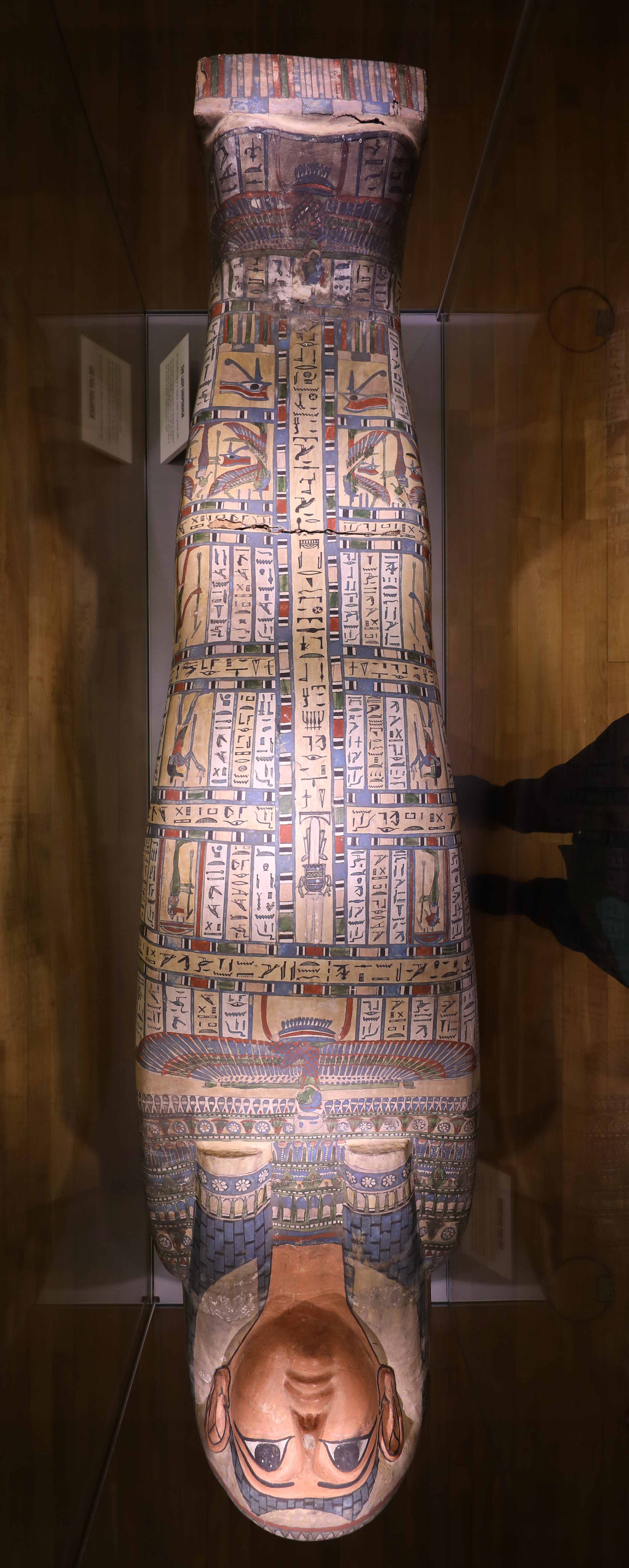Shep-en-hor on:
[Wikipedia]
[Google]
[Amazon]
 Lady Shep-en-hor ca. 600BC was an Egyptian woman whose coffin, and possibly mummy, was originally found in Thebes but now resides in the Hunterian Museum and Art Gallery in
Lady Shep-en-hor ca. 600BC was an Egyptian woman whose coffin, and possibly mummy, was originally found in Thebes but now resides in the Hunterian Museum and Art Gallery in
Glasgow
Glasgow ( ; sco, Glesca or ; gd, Glaschu ) is the most populous city in Scotland and the fourth-most populous city in the United Kingdom, as well as being the 27th largest city by population in Europe. In 2020, it had an estimated popul ...
. Her remains and coffin were first known to have been in the ownership of Giovanni Belzoni and been the collection of the museum since 1820 when they were donated by Joshua Heywood.
Family
According to the coffin Shep-en-hor was the daughter of In-Amun-nif-nebu (father) and Irt-irw (mother).Coffin
The Coffin is made from sycamore and has been extensively embellished. The text on the coffin mostly consists of prayers although it mentions Shep-en-hor's name as well as those of her monther and father. It also states the location of its burial was West Thebes.Mummy
The poorly documented provenance of the Coffin and Mummy prior to their donation to the museum make it impossible to be sure if the mummy is actually that of Shep-en-hor. The mummy has not been unwrapped. She was X-rayed on 21 December 1977 and was MRI scanned at the end of the 2000s. Pelvic dimensions resulted in the radiographers involved in the X-ray concluding that the mummy was that of a woman 1.47 m tall under the age of 40. Her wrappings contained a large number offaience
Faience or faïence (; ) is the general English language term for fine tin-glazed pottery. The invention of a white pottery glaze suitable for painted decoration, by the addition of an oxide of tin to the slip of a lead glaze, was a major ad ...
beads which were formerly part of a bead net.
Notes
References
{{reflist Ancient Egyptian mummies